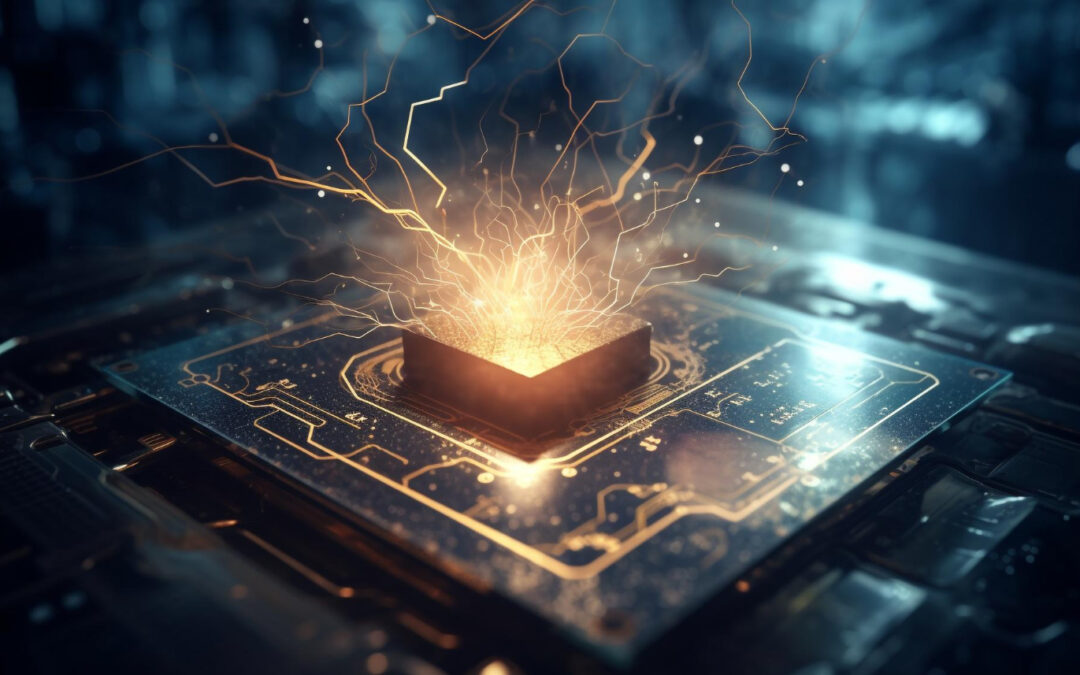In this age of rapid technological advancements, encryption has become the cornerstone of data security. It ensures that our sensitive information remains protected from prying eyes and malicious actors. However, with the rise of quantum computing, this seemingly impenetrable shield of encryption is facing a new and unprecedented challenge. As data increasingly becomes the key to preventing and detecting fraud, sharing data within and between commercial and government organizations is crucial. However, trusting the secure exchange of data in the age of quantum computing will be even more difficult. In this blog post, we will explore how quantum computing poses a risk to encrypted data and how quantum key distribution (QKD) can help safeguard data information in the quantum era.
The Quantum Computing Conundrum
Quantum computing, with its immense computational power, threatens to disrupt the very foundations of modern encryption algorithms. Traditional cryptographic methods, such as RSA and AES, rely on the difficulty of factorization and discrete logarithm problems for their security. However, quantum computers have the potential to render these problems trivial through their ability to perform parallel computations and solve complex mathematical equations at an astonishing speed.
The Risk to Encrypted Data
The advent of quantum computing implies that encrypted data, which was once considered secure, may become vulnerable to attacks. Encrypted communications, financial transactions, and even personal information could fall into the wrong hands if quantum computers fall into the hands of malicious actors. The impact of such a breach could be catastrophic, leading to compromised privacy, financial loss, and a breakdown of trust in digital systems. Indeed, a new scheme, known as “harvest now, decrypt later” is already being used by cyber criminals, who are storing encrypted data they steal knowing it will be valuable once they can decrypt it with the quantum computers of tomorrow.
A More Secure Way to Transmit Data in the Age of Quantum
Enter QKD. As quantum computing poses a significant risk to encrypted data, scientists and researchers have been tirelessly working to develop new cryptographic methods capable of withstanding quantum attacks. One promising solution that has emerged is Quantum Key Distribution (QKD). Unlike traditional encryption, which relies on computational complexity, QKD leverages the principles of quantum mechanics to provide an unprecedented level of security.
How QKD Works
QKD harnesses the properties of quantum mechanics, such as the superposition and entanglement of particles, to establish an unbreakable encryption key between two parties. The key distribution process takes advantage of the fundamental laws of physics, making it immune to attacks from quantum computers. QKD systems incorporate mechanisms to detect any attempts to intercept the transmitted quantum signals. These mechanisms, such as the use of single photons, allow the legitimate parties to detect any disturbances caused by eavesdropping attempts. If an eavesdropper tries to gain access to the key, the legitimate parties will notice the changes in the transmitted signals, enabling them to abort the key exchange and prevent unauthorized access.
The Benefits of QKD
Three key advantages of QKD are 1) unconditional security, 2) “future-proof security”; and 3) enhanced trust between those who share data. First, QKD provides unconditional security, guaranteeing that the encryption keys remain secret, even against the power of quantum computers. The laws of quantum mechanics make it impossible for an eavesdropper to intercept the key exchange without being detected.
Second, by adopting QKD, organizations can future-proof their data security infrastructure against the imminent threat of quantum computing. This ensures that encrypted data remains safe even as quantum computers become more powerful and prevalent. And finally, QKD enhances trust by offering a level of security that goes beyond the capabilities of classical encryption methods. It allows individuals and businesses to communicate and exchange sensitive information with the utmost confidence in the confidentiality of their data.
The National Institute of Standards and Technology (NIST) has been actively involved in the research and development of QKD technologies. NIST has been conducting research and providing guidance to support the development and standardization of QKD protocols. Their goal is to ensure that QKD systems are secure, reliable, and interoperable. NIST has organized multiple workshops and competitions to evaluate and select the most promising QKD technologies.
While quantum computing brings about unprecedented computational power, it also poses a significant risk to the security of encrypted data. However, through the utilization of QKD, we can safeguard our information from the threats posed by quantum computers. By harnessing the laws of quantum mechanics, QKD provides an unbreakable method of key exchange, ensuring that our data remains protected in the quantum era. As quantum technology continues to evolve, embracing QKD will be crucial to preserving data security and maintaining trust in our digital world.
Image by Vecstock

